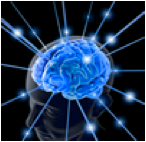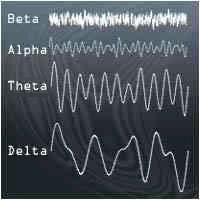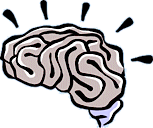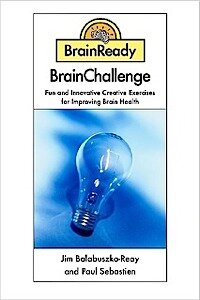
As well as the Brainflex exercises and improving our eating habits to include the right foods and supplements, reducing stress is another key component for getting your brain functioning in peak performance.
In previous blogs we’ve touched on the benefits of music and some aspects of meditation – now let’s look at a combination of the two. Meditation can stop the stress response and slow your heart rate, calm your breathing and reduce cortisol levels.
However many people find meditation difficult to grasp at first.
This is because our minds aren't used to being completely quiet, and it does take some practice to stop thinking about the future, the past, our to-do lists, that jerk at the office, and all of the other things we need to think about in our daily lives. Meditation for beginners is a skill that takes time to master, like any other skill.
So what’s another way of going about it?
Studies at the Menninger Clinic back in the 1970s determined the brain wave patterns of deep meditation, and a researcher at Mt. Sinai Medical Center in New York discovered a property of the brain that allowed these same brain wave patterns to be induced using sound—so these same meditative states (and the incredible results they produce) could be experienced by anyone.
The first thing you need to know is that twenty-four hours a day, nerve cells in your brain are generating electrical impulses that fluctuate rhythmically in distinct patterns called brain wave patterns—patterns closely correlated with your thoughts, your emotions, your state of being and the functioning of the various systems of your body.
There are four categories of brain wave patterns. The most rapid is called a beta brain wave pattern, the pattern of normal waking consciousness. Beta is associated with concentration, arousal, alertness, and cognition.
However at its highest, most rapid levels beta is associated with anxiety, disharmony, and unease, so the ability to slow your self down from those levels might be beneficial.
As you become more relaxed, your brain wave activity slows into what is called an alpha brain wave pattern. Alpha patterns vary from deep alpha, a state of deep relaxation often referred to as the twilight state between sleep and waking, to the higher end of alpha which is a more focused yet still very relaxed state.
When you are absorbed in a good book (or a television show) you are probably in alpha. And, alpha is often associated with what is known as "superlearning"—the ability to learn, process, store and recall large amounts of information quickly and efficiently.
Slower still are theta waves. Theta is best known as the brain wave state of dreaming sleep, but it is also associated with a number of other beneficial states, including increased creativity, increased memory abilities, and what are called integrative experiences (in which we make broadly-based positive changes in the way we see ourselves, others, or a certain life situation).
"Ah-ha!" experiences, where you suddenly "get it," have an insight, or a great idea suddenly comes to you, are accompanied by bursts of theta waves in your brain.
And best of all, theta is also a state of tremendous stress relief. In the slower theta brain wave pattern, the brain makes lots of relaxing endorphins that really do—as you will see (or rather, feel) when you try it for yourself—melt your stress away.
 The slowest brain wave pattern is delta, the brain wave pattern of dreamless sleep. Generally people are asleep in delta, but there is evidence that it is possible to remain alert in this state—a very deep, trance-like, non-physical state you'll have to experience to appreciate.
The slowest brain wave pattern is delta, the brain wave pattern of dreamless sleep. Generally people are asleep in delta, but there is evidence that it is possible to remain alert in this state—a very deep, trance-like, non-physical state you'll have to experience to appreciate.
In certain delta frequencies the brain releases many highly beneficial substances, including human growth hormone, which we ordinarily make in decreasing quantities as we get older, resulting in many aging symptoms including loss of muscle tone, increased weight gain, loss of stamina, and many diseases associated with aging.
So how can we use music to help us reach these relaxed brain wave patterns?
One option is an audio program named Holosync. Several of my friends have used this for years, so I thought it was time to give it a try. In theory as we slow the brain waves from beta to alpha to theta to delta using Holosync, there is a corresponding increase in balance between the two hemispheres of the brain. This more balanced brain state is called brain synchrony, or brain synchronization.
What this means to you: As the brain waves slow and the brain balances, you tap into what scientists’ call whole-brain thinking, or whole-brain functioning.
So just what is whole-brain thinking? It's using both sides of the brain to think, instead of using one side at a time, as we usually do. It's like thinking in stereo and is associated with increased creativity, insight, learning ability and problem solving ability.
Holosync works by providing combinations of certain tones at precise frequencies set beneath calming music and environmental sounds. Listened to with headphones these sounds help you experience the brain wave patterns of deep meditation.
You simply buy their CD’s and listen to the binaural beats using a good set of headphones to block out all external noise. Ideally an hour a day will let you build through the stages.
What happened when I tried it? I have to admit the first time I felt very relaxed and almost fell asleep. However afterwards my brain did feel sharper and more alert. I’m certainly keen to continue the use to see the effect.
There are a number of other options, like Hemisync and Lifeflow, which I have not yet tried. It should be noted that there is of course a cost to these programs and Brainready are certainly not endorsing any of them. We’re just making you aware of possible options.
I should also mention that I have read of isolated cases where listening to these CD’s brought out depressive feelings and emotions at certain stages during the process. Like anything, research it for yourself before you use it.
If you have tried any of these programs, you might like to let us know your opinion.




